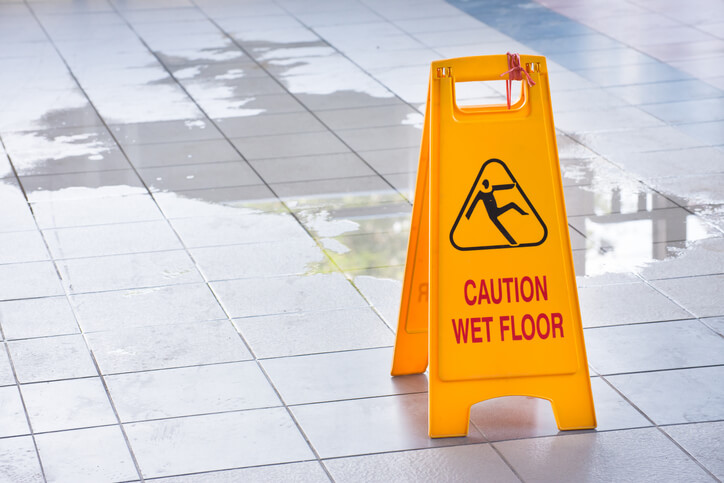Have you been injured by a dangerous condition on someone else’s property? If so, you may be able to pursue a slip and fall claim to seek compensation for the damages you have sustained. There are, however, a number of hurtles you will need to clear in order to bring a successful claim. We’ll talk more about those here.
Slip and Fall Accidents
A slip and fall accident claim, like other personal injury claims, is most often based on the legal theory of negligence. If the negligence of a property owner led to your injuries, then you may be entitled to compensation for your losses. To prove negligence, the following elements must be met:
- Duty: The property owner must have owed you a duty of care, including working to ensure that the property was reasonably free of hazards.
- Breach: The property owner failed to uphold the requisite duty of care and failed to eliminate property hazards, notify you of property hazards, or promptly remedy property hazards.
- Causation: The breach of the property owner’s duty to you was a direct and proximate cause of your injuries.
- Damages: You incurred damages as a result of the property owner’s duty which led to your injuries and other losses.
Slip and fall claims are usually filed with the property owner’s insurance carrier. You should be prepared for the insurance company to deny your claim or undermine your claim so that they can offer to settle your claim for less than you are actually owed. Insurance companies will use a number of arguments to challenge your slip and fall claim. Some of the more common arguments involve placing the blame for the slip and fall on the claimant. These arguments include:
- The claimant was not permitted on the part of the property where the slip and fall occurred;
- The claimant should have been aware of the dangerous condition as the condition was obvious;
- Reasonable steps were taken to make visitors to the property aware of the dangerous property condition (such as the use of cones and clear signage); or
- The slip and fall occurred due to the claimant being distracted or not paying attention to where they were going.
If a California court determines that you were partly responsible for causing the slip and fall, you still may be able to recover compensation, but your damage award will be reduced according to your percentage of the fault. This is due to California’s “pure comparative negligence rule.”
Slip and fall victims should also be aware of the applicable statute of limitations on these types of cases. For personal injury cases filed in civil court, California places a two year deadline on a person’s ability to file the claim. In some rare cases, the court may grant you more time to get your case filed if they find that the statute of limitations was “tolled” for some reason. Otherwise, however, if you file your claim beyond the two-year statute of limitations time frame, it is likely that your claim will be barred.
Personal Injury Attorney
If you have been injured in a slip and fall accident on someone else’s property, reach out to the trusted personal injury team at BoyesLegal, APC as soon as possible. Contact us today.

